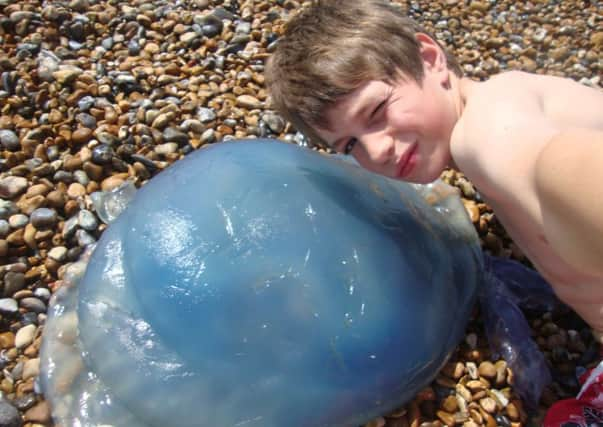Invasion of jellyfish
This article contains affiliate links. We may earn a small commission on items purchased through this article, but that does not affect our editorial judgement.


The gelatinous mass, thought to be a barrel jellyfish, was washed up at South Cliff earlier this month and photographed by Patrick Marsh.
It can grow up to a metre in width and has a mild sting.
According to the marine Conservation Society there are eight species of jellyfish which can be found in our water, seven of which can sting.
Advertisement
Hide AdAdvertisement
Hide AdThe most dangerous is the Portuguese man-of-war, which is luckily rare.
There have already been a number of incidents this summer where large numbers of barrel jellyfish have washed up on beaches around the British coast.
The barrel jellyfish - Rhizostoma pulmo - is found in the northeast Atlantic and Mediterranean and is the biggest species to be found in the UK.
Whilst it can sting, it is not dangerous to humans and only eats plankton.
Advertisement
Hide AdAdvertisement
Hide AdExperts say their stings are not powerful enough to do any serious harm, but warn swimmers that it is best not to touch them.
Conservationist Steve Trewhella recently spotted a swarm of hundreds of the dustbin lid sized creatures off the coast of Dorset.
He said: “We last got such a glut of them in the 1980s but it was nothing like what I saw this year. They were just everywhere. I’ve never seen anything like it.”
The Marine Conservation Society say it is rare for them to swim closer to the coast or inland, which is why recent sightings have made headlines.
Advertisement
Hide AdAdvertisement
Hide AdWhen the seas warm up in summer and autumn they breed at a phenomenal rate, creating huge swarms.
Beneath the dustbin lid-shaped bell are hundreds of tiny mouths each surrounded by tiny stinging tentacles to catch plankton.
The sting is no more harmful than that of a stinging nettle.
Don’t miss out on all the latest breaking news where you live.
Advertisement
Hide AdAdvertisement
Hide AdHere are four ways you can be sure you’ll be amongst the first to know what’s going on.
1 Make our website your homepage at www.bexhillobserver.net
2 Like our Facebook page at www.facebook.com/bexhillobserver
3 Follow us on Twitter @BexhillObs
4 Register with us by clicking on ‘sign in’ (top right corner). You can then receive our daily newsletter AND add your point of view to stories that you read here.
And do share with your family and friends - so they don’t miss out!
The Bexhill Observer – always the first with your local news.
Be part of it.